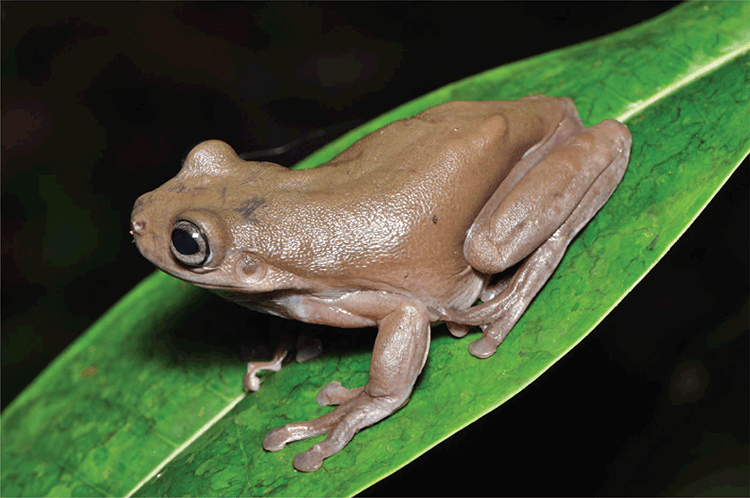New Guinea has ‘chocolate’ frogs, but they’re not for eating
The new amphibian is definitely not a Harry Potter snack.

In the swampy rainforests of New Guinea back in 2016, frog specialist Stephen Richards waded through wetlands, dodged crocodiles, and batted away mosquitos, all while listening and searching for frogs. During his sweep of the boggy terrain, he was rewarded for his efforts, managing to find and bag a few tree frogs.
Richards brought the amphibians back to his team in native Australia for analysis. He knew that they weren’t any old tree frogs. At first glance they look identical to the common Australian green tree frog. But this species of frog is the color of cocoa, earning it the nickname of “chocolate frog.” Sometimes green tree frogs can be brown, so the question was whether this frog specimen was indeed something new. Through extensive DNA analysis, scientists concluded that yes, they had found a previously unidentified species. Their findings were published in the Australian Journal of Zoology.
This chocolate-colored frog, dubbed Litoria mira, is a close relative to the Australian green tree frog. Study co-author Paul Oliver from the Queensland Museum told CNN that these two frog species likely began to diverge during the Pliocene, about 5.3 to 2.6 million years ago, before New Guinea and Australia’s land masses separated, and now they are genetically distinct.
[Related: How did ancient frogs move between America and Australia? Easy: They hopped across Antarctica.]
“We named the new frog Litoria mira because the word Mira means surprised or strange in Latin,” Oliver told Sci-News. “What’s a little surprising about this discovery is that the well-known and common green tree frog of Australia has a long-overlooked relative living in the lowland rainforests of New Guinea,” he said.
Since the Torres Strait flooded in and separated Australia from New Guinea, the two lands have become vastly different. Australia is now primarily a savannah, while New Guinea remains a wet rainforest. Animals in each land have thus adapted to very different environments.
For the average person, discovering a new species would seem like a monumental feat. But for Richards, this is a familiar experience. The scientist previously led an expedition into New Guinea where his team found 200 new species of animals and insects in just two months. He attributes some of his success to the fact that these swamplands are pretty inaccessible—and inhospitable for humans. ”Because the frog lives in very hot, swampy areas with lots of crocodiles, all these things discourage exploration,” Richards told CNN.
